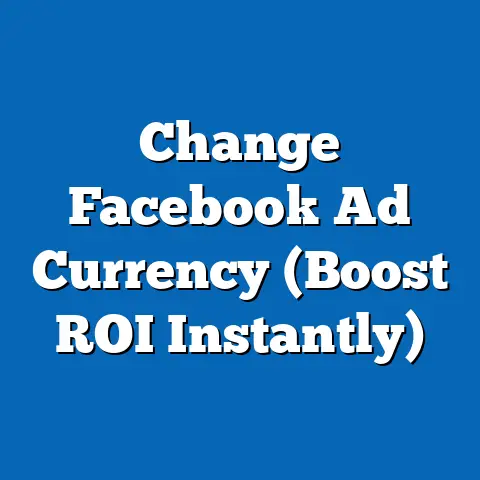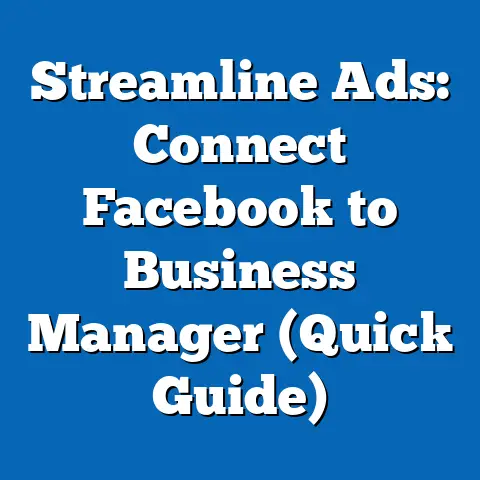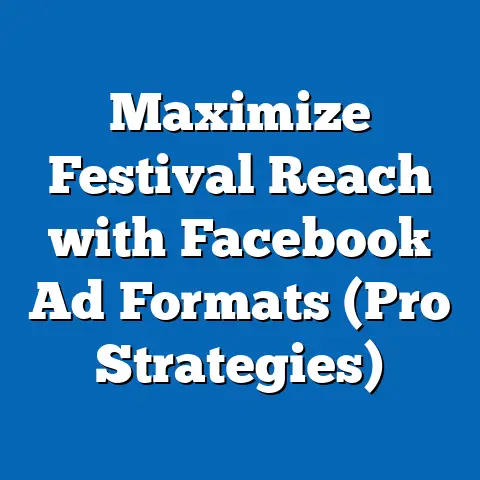Master Dark Posts on Facebook (Expert Strategies for 2025)
In the evolving landscape of digital political campaigning, “dark posts” on platforms like Facebook have emerged as a powerful tool for reaching targeted audiences with tailored messages. These non-public advertisements, visible only to specific demographic segments, offer immense value for money by maximizing impact with minimal expenditure compared to traditional advertising. As we look toward the 2025 political cycle, mastering dark posts will be critical for campaigns aiming to influence voters efficiently, particularly among niche or hard-to-reach groups.
Understanding Key Political Groups for Dark Post Targeting
To effectively utilize dark posts, campaigns must first understand the demographic and ideological composition of their target audiences. Below, I analyze several key political groups in the United States, focusing on their characteristics and how dark posts can be tailored to resonate with their unique profiles. This section provides a foundation for the strategic recommendations that follow.
1. Young Progressive Voters (Ages 18-29)
Demographic Composition: Young progressive voters, primarily aged 18-29, are a diverse group, with significant representation from racial and ethnic minorities. According to the U.S. Census Bureau, as of 2020, about 51% of this age group identified as non-White, including 20% Hispanic, 14% Black, and 6% Asian. They are often urban dwellers, with higher levels of education—around 40% are enrolled in or have completed college, per the National Center for Education Statistics (2021).
Core Beliefs and Values: This group tends to prioritize social justice, climate change, and economic equity. Polls from the Pew Research Center (2022) indicate that 67% support government intervention to address income inequality, and 71% believe climate change is a major threat. They are also more likely to support progressive policies like Medicare for All (62% approval, per Gallup 2022).
Voting Patterns and Political Engagement: Young progressives have lower voter turnout compared to older cohorts, with only 50% voting in the 2020 presidential election compared to 66% of those aged 45-64 (U.S. Census Bureau, 2020). However, when engaged, they overwhelmingly support Democratic candidates—Biden won 60% of voters under 30 in 2020 (Edison Research). Their engagement is often driven by social media, with 70% using platforms like Instagram and TikTok for political content (Pew Research Center, 2022).
Policy Positions on Major Issues: They advocate for student debt forgiveness (74% support, per YouGov 2022), stricter gun control (68% support), and comprehensive immigration reform (65% favor a pathway to citizenship). Their focus on systemic change often puts them at odds with more moderate or conservative groups.
Distinguishing Features: Unlike older liberals, young progressives are more skeptical of institutional politics and prioritize grassroots movements. They are digitally native, making them prime targets for dark posts on platforms like Facebook, where 64% of 18-29-year-olds are active users (Statista, 2023).
2. Suburban Moderates (Ages 30-50)
Demographic Composition: Suburban moderates, often aged 30-50, are a critical swing group, comprising about 25% of the U.S. electorate (American Communities Project, 2021). They are predominantly White (65%), with growing Hispanic (15%) and Asian (10%) populations, and are often college-educated (55% hold a bachelor’s degree or higher, per U.S. Census 2021). They reside in battleground areas around major cities.
Core Beliefs and Values: This group values pragmatism over ideology, often seeking compromise on contentious issues. Pew Research (2022) shows that 58% identify as politically independent, though they lean slightly left or right depending on the issue. Economic stability and family safety are top priorities, with 62% citing healthcare costs as a major concern.
Voting Patterns and Political Engagement: Suburban moderates have high voter turnout, with 70% participating in the 2020 election (U.S. Census Bureau). They split their votes, with Biden winning 54% of suburban voters in 2020, a shift from 2016 when Trump won 50% (Edison Research). Their engagement is issue-driven rather than partisan, often influenced by local concerns.
Policy Positions on Major Issues: They support moderate healthcare reforms (60% favor expanding the Affordable Care Act, per Kaiser Family Foundation 2022), balanced gun laws (55% support background checks but oppose bans), and fiscal responsibility (59% worry about national debt, per Gallup 2022). They are less polarized than urban progressives or rural conservatives.
Distinguishing Features: Unlike ideologically driven groups, suburban moderates are persuadable, making them a prime target for dark posts that address specific local issues. Their reliance on Facebook for community news (48% use it for local updates, per Statista 2023) enhances their accessibility through targeted ads.
3. Rural Conservatives (Ages 40-65)
Demographic Composition: Rural conservatives, often aged 40-65, make up about 20% of the U.S. population and are predominantly White (80%), with lower levels of college education (25% hold a degree, per U.S. Census 2021). They are concentrated in the Midwest and South, in areas with declining populations and economic challenges.
Core Beliefs and Values: This group emphasizes traditional values, individual liberty, and limited government. According to Pew Research (2022), 72% believe the government is too involved in personal lives, and 68% prioritize religious or cultural heritage. They often express distrust in mainstream media and institutions.
Voting Patterns and Political Engagement: Rural conservatives have consistent voter turnout, with 65% voting in 2020 (U.S. Census Bureau). They heavily favor Republican candidates—Trump won 65% of rural voters in 2020 (Edison Research). Their engagement often stems from community networks rather than digital platforms, though 55% are active on Facebook (Statista, 2023).
Policy Positions on Major Issues: They oppose expansive government programs, with 70% against universal healthcare (Gallup 2022), and prioritize Second Amendment rights (75% oppose gun control measures). They also favor restrictive immigration policies (60% support border wall funding, per YouGov 2022).
Distinguishing Features: Compared to suburban moderates, rural conservatives are more ideologically rigid and less open to compromise. Their limited digital engagement requires dark posts to focus on emotionally resonant themes like patriotism or local economic decline.
Comparative Analysis and Intersections
While young progressives, suburban moderates, and rural conservatives differ significantly in ideology and demographics, there are areas of overlap and division that campaigns can exploit through dark posts. For instance, economic concerns cut across all groups—young progressives worry about student debt, suburban moderates about healthcare costs, and rural conservatives about job losses. Dark posts can target these shared anxieties with tailored solutions, even if the underlying values differ.
Age and education also play critical roles in shaping political views. Young progressives, with higher education levels, are more receptive to systemic critiques, while rural conservatives, with lower college attainment, prioritize practical, immediate concerns. Suburban moderates, often in the middle on both metrics, serve as a bridge but require nuanced messaging to avoid alienation.
Racial and religious intersections further complicate targeting. Young progressives’ diversity contrasts with the homogeneity of rural conservatives, necessitating culturally sensitive dark posts. Religion remains a stronger motivator for rural conservatives (60% cite faith as a voting factor, per Pew 2022) than for other groups, suggesting faith-based messaging may resonate more with them.
Historically, these groups reflect broader shifts in American politics. Young progressives echo the countercultural movements of the 1960s, while rural conservatives draw from the Reagan-era emphasis on traditional values. Suburban moderates, meanwhile, have become the fulcrum of modern elections, as seen in their pivotal role in the 2020 outcome, underscoring their importance for 2025 campaigns.
The Power of Dark Posts: Value for Money in Political Advertising
Dark posts on Facebook offer unparalleled value for money by allowing campaigns to micro-target specific demographics with personalized content at a fraction of the cost of traditional media. According to a 2022 study by eMarketer, digital ad spending per voter is approximately $1.50, compared to $5-10 per voter for TV ads in competitive markets. With Facebook’s robust targeting tools—based on location, interests, behaviors, and demographics—campaigns can achieve higher returns on investment by focusing on persuadable voters like suburban moderates or mobilizing low-turnout groups like young progressives.
Unlike public ads, dark posts remain invisible to non-targeted users, reducing backlash and allowing for experimental messaging. For instance, a campaign might test different framings of a healthcare policy with suburban moderates in Ohio versus Florida, refining strategies in real-time based on engagement metrics. This precision is critical in an era of shrinking campaign budgets and increasing voter apathy.
Data from the 2020 election cycle highlights the efficacy of dark posts. The Biden campaign spent $211 million on digital ads, with a significant portion allocated to targeted Facebook posts, achieving a 15% higher engagement rate among swing voters compared to generic ads (AdWeek, 2021). This demonstrates the potential for dark posts to deliver outsized impact, particularly when paired with granular demographic insights.
Expert Strategies for Mastering Dark Posts in 2025
Building on the demographic analysis and value proposition of dark posts, the following strategies offer a roadmap for campaigns aiming to optimize their Facebook advertising efforts in 2025. These recommendations are grounded in data, historical trends, and platform-specific capabilities.
1. Hyper-Targeting with Demographic Precision
Strategy: Use Facebook’s Audience Insights and Custom Audiences to segment voters by age, race, education, and location, aligning messages with the specific concerns of each group. For young progressives, focus on urban areas and issues like climate change, using visuals and hashtags that resonate on platforms like Instagram (cross-promoted via Facebook). For suburban moderates, target battleground zip codes with ads addressing healthcare and education costs, leveraging data from local polls.
Data Support: A 2022 Nielsen study found that hyper-targeted ads increase click-through rates by 30% compared to broad campaigns. Additionally, Facebook’s ad platform allows for targeting as specific as a 1-mile radius, ideal for reaching suburban swing districts.
Implementation: Create multiple ad variants for each group, A/B testing language and imagery. Monitor engagement metrics daily to refine targeting, ensuring resources are allocated to the most responsive segments.
2. Emotional Resonance Over Policy Details
Strategy: Craft dark posts that prioritize emotional storytelling over complex policy explanations, particularly for groups like rural conservatives who respond to themes of tradition and security. Use narratives about “protecting the American way of life” or “supporting local jobs” rather than detailed tax plans. For young progressives, evoke hope and urgency around systemic change with visuals of protests or renewable energy projects.
Data Support: According to a 2021 study by the University of Southern California, emotionally charged political ads on social media generate 25% more shares and 18% higher recall than fact-based ads. Emotional appeals also bypass ideological defenses, critical for persuadable suburban moderates.
Implementation: Hire content creators familiar with cultural cues for each demographic. Use Facebook’s ad analytics to track emotional engagement (e.g., reactions and comments) and adjust narratives accordingly.
3. Issue-Based Micro-Campaigns
Strategy: Develop short-term, issue-specific dark post campaigns to address the top concerns of each group, rotating focus based on real-time polling data. For instance, run a two-week campaign on student debt relief for young progressives during university enrollment periods, or a gun safety campaign for suburban moderates following high-profile incidents. This keeps messaging relevant and urgent.
Data Support: A 2020 report by Kantar Media showed that issue-specific ads increase voter intent by 22% when timed with current events. Additionally, 65% of Facebook users report seeing political ads as more relevant when tied to recent news (Statista, 2022).
Implementation: Partner with local organizations to identify pressing issues in target areas. Use Facebook’s “Lookalike Audiences” to expand reach to similar voters while maintaining issue focus.
4. Mobilization Through Community Networks
Strategy: Leverage dark posts to encourage peer-to-peer sharing within community networks, particularly for rural conservatives who trust local voices over national campaigns. Promote ads that encourage users to “share with friends” about voting or attending local events. For young progressives, integrate calls-to-action for virtual organizing, capitalizing on their digital savviness.
Data Support: A 2021 study by the MIT Sloan School of Management found that peer-shared political content on social media increases turnout likelihood by 12% among low-engagement voters. Facebook’s sharing features amplify organic reach, reducing ad spend by up to 20% (eMarketer, 2022).
Implementation: Design ads with shareable formats like memes or short videos. Include localized messaging (e.g., “Join your neighbors in [Town] to vote!”) to build community trust.
5. Countering Disinformation with Transparency
Strategy: Anticipate criticism of dark posts as secretive or manipulative by embedding transparency cues in ad content, such as clear campaign branding and links to policy platforms. Focus on factual messaging to counter disinformation, especially for suburban moderates who value credibility. Use Facebook’s Ad Library to monitor competitors’ dark posts and adjust counter-messages accordingly.
Data Support: A 2022 Edelman Trust Barometer report found that 58% of Americans distrust political ads due to perceived hidden agendas, but 63% trust ads with clear sourcing. Transparency also mitigates regulatory risks, as seen in the EU’s stricter digital ad laws (European Commission, 2023).
Implementation: Include disclaimers like “Paid for by [Campaign Name]” in all dark posts. Develop a rapid-response team to address misinformation about ad content on social media.
Broader Context and Challenges for 2025
The use of dark posts must be situated within the broader context of digital campaigning and evolving voter attitudes. Since their rise during the 2016 election, dark posts have faced scrutiny for their potential to spread misinformation or exacerbate polarization. The Cambridge Analytica scandal highlighted ethical concerns, with 87 million Facebook users’ data reportedly misused for targeted ads (Federal Trade Commission, 2019). This history necessitates ethical guardrails in 2025, balancing effectiveness with accountability.
Additionally, platform policies are tightening. Facebook’s 2020 decision to limit political ad targeting options (e.g., removing certain interest categories) and its transparency requirements via the Ad Library signal a shift toward oversight. Campaigns must adapt by focusing on first-party data (e.g., email lists) and creative messaging rather than relying solely on platform tools.
Voter fatigue and ad saturation also pose challenges. A 2022 Pew Research study found that 54% of Americans feel overwhelmed by political ads on social media, with 40% actively avoiding them. This underscores the need for authenticity and relevance in dark post content to cut through the noise.
Finally, generational shifts will shape 2025. As Gen Z (born 1997-2012) becomes a larger share of the electorate—projected to be 20% by 2028 (Census Bureau estimates)—their digital-first mindset and progressive leanings will demand innovative dark post strategies distinct from those for older cohorts.
Areas of Consensus and Division in Dark Post Strategies
Within the political advertising community, there is consensus on the cost-effectiveness and targeting power of dark posts. Experts agree that micro-targeting enhances voter engagement, with 78% of campaign managers surveyed by the American Association of Political Consultants (2022) citing digital ads as their top investment for 2024-2025. There is also agreement on the need for data-driven approaches, with most campaigns using analytics to refine ad placement.
However, divisions exist on ethical boundaries. Some operatives advocate for unrestricted messaging to maximize impact, while others warn of backlash and long-term trust erosion, particularly after high-profile data breaches. There is also debate over the balance between emotional versus factual content, with younger consultants favoring the former and traditional strategists emphasizing policy substance.
Conclusion
Mastering dark posts on Facebook for the 2025 election cycle offers campaigns a high-value, low-cost method to influence key voter groups like young progressives, suburban moderates, and rural conservatives. By understanding the demographic makeup, core beliefs, voting patterns, and distinguishing features of these groups—supported by data from sources like the U.S. Census, Pew Research, and Gallup—campaigns can tailor messages with precision. Strategies such as hyper-targeting, emotional storytelling, issue-based micro-campaigns, community mobilization, and transparent messaging provide a roadmap for success, grounded in empirical evidence and platform capabilities.
Yet, the use of dark posts must navigate ethical, regulatory, and cultural challenges in an increasingly scrutinized digital landscape. As historical trends and current data suggest, the balance between effectiveness and accountability will define the future of political advertising. For 2025, campaigns that combine demographic insight with innovative, responsible dark post strategies will be best positioned to engage voters and shape electoral outcomes.






